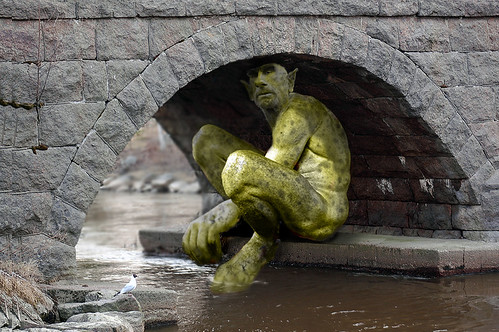History Of Trolling
Trolls have existed almost as long as the Internet itself. Trolling was first identified as early as 1978, long before the easy-to-use Facebook platform had even been dreamt of, when the Bulletin Board System (BBS) was developed to share knowledge between hobbyist computer users via connected computer networks. But trolling became far more commonplace in the early 1990s, when computer fans used a chat system known as Usenet to trade knowledge, jokes and gossip.

Where did ‘trolls’ and ‘trolling’ come from?
These days, when we hear someone labeled as being a ‘troll’ the mental picture created is generally a strange, ugly creature sitting under a bridge waiting for passing goats. But the origins of the word are much more benign.
‘Trolling’ is a fishing term, describing the practice of trailing lines behind a boat, waiting for passing fish to ‘bite’. In this context, a ‘troll’ is the fisherman trying to catch fish in this way.
The origins of trolling – an inside joke
Experienced, long-term users of Usenet began engaging in a relatively harmless practice they dubbed “trolling for newbies”. The idea was to lure new (“newbie”) Usenet users into earnest debates about relatively meaningless topics with which the rest of the community was already well familiar.
In reality, early examples of trolling were used just to gauge the level of experience and knowledge of other users, rather than an attempt at outright humiliation. Humour rather than provocation was the aim of the ‘game’.
In the early 1990s, Usenet had a relatively small global user base, meaning that the percentage of malicious users was tiny. The community also recognised that gentle humour at the expense of other users was perfectly acceptable, but that outright hostility and being personally offensive was inappropriate.
Trolling now
As more people have “got online”, the Internet has gone from being a geeky niche to an essential communications tool for the majority of the British public. The vast majority of web users are perfectly polite and affable. However, the anonymity afforded by the Internet has attracted a small antisocial minority who use social networking as a way to target and abuse others.
And where trolling was once restricted solely to a few niche platforms, trolls can now be found almost anywhere that people meet online, particularly Facebook, Twitter and YouTube. More disturbingly, some trolls have begun taking their assaults offline, sending death threats through the post or worse, as was the case with journalist Leo Traynor.
While early trolling was a relatively harmless activity, trolling these days makes the headlines due to the shocking, sadistic and offensive acts committed by some trolls. Banter and humour have been replaced by a desire to hurt and offend, resulting in many people being prosecuted for harassment, causing distress and even hate speech.
All the social networks claim to be committed to stamping out trolling and encourage users to report incidents. The Government has also announced that they are to tighten the law, making it easier to prosecute cases of harassment and trolling.
Trolling has been around for many years, but the practice has changed considerably. Hopefully changes to social network policies, underpinned by heavyweight legislation will drive the practice out of existence for the good of the general Internet-using public.
Featured images:
- License: Creative Commons image source
Written by Alexandra James, a blogger on social media trends.


Great topic, that was an interesting read and know I know a little bit more about trolls!